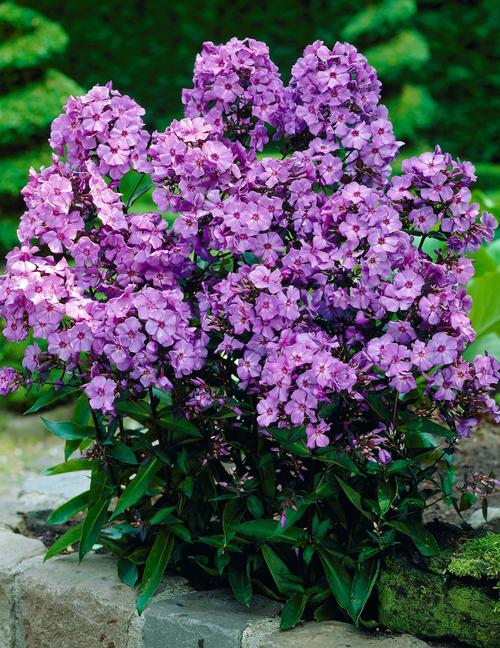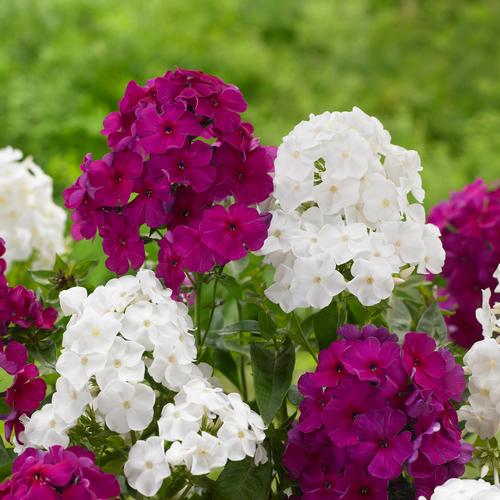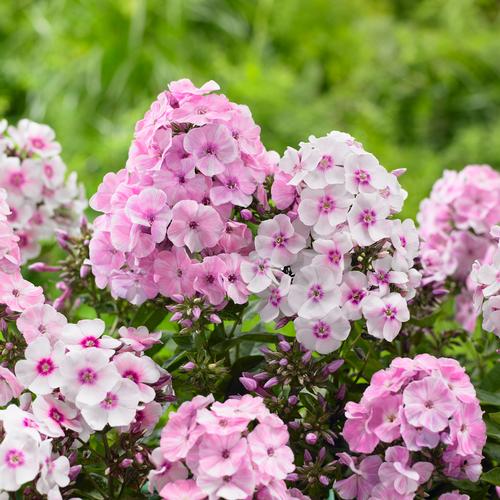Your Guide to Planning, Planting, and Growing Phlox
Garden phlox (Phlox paniculata) is a hardy, long-lived perennial with a romantic charm. From midsummer to early fall, these sturdy, upright plants are topped with large clusters of fragrant flowers that come in a fantastic range of colors including white, pink, fuchsia, red, lavender, purple and orange as well as dozens of eye-catching bicolors. The sweet-smelling, nectar-rich blossoms attract butterflies and hummingbirds and are beautiful in summer flower arrangements.
Start with a Better Plant
When you compare two phlox plants side by side, it’s easy to see differences in quality. Longfield Gardens supplies grade #1 plants (shown at far left) with strong, healthy root systems. The bigger the plant, the faster it will settle into your garden and the sooner it will flower.

Plan for Success
Sun and Shade: Phlox may be grown in full sun or partial shade. The plants will produce more flowers when they are grown in full sun.
Zone: Garden phlox are winter hardy in zones 4 to 8. Click HERE to find your growing zone.
Soil Conditions: Phlox should be planted in fertile, well-drained soil where they will get a consistent supply of moisture throughout the summer.
When to Plant: Plant phlox in spring when the weather is cool and the soil is moist.

How to Plant Phlox
Loosen the soil to a depth of 12” and mix in several handfuls of compost plus about ¼ cup of all-purpose granular fertilizer (follow package directions).
Put the plant in the hole so the crown (where roots meet stem) is right at the soil line.
Cover the roots with soil and water well.
Planting Tips for Phlox
Phlox need a consistent supply of moisture and will not tolerate drought. Before you plant, incorporate compost or other organic matter to enrich the soil and increase its ability to hold moisture.

Where to Plant Garden Phlox
Perennial Gardens Garden phlox makes a good companion for other summer-blooming perennials such as lilies, bee balm, rudbeckia, Shasta daisies, yarrow, clematis and daylilies. In flower beds, the taller cultivars of Phlox paniculata provide a good backdrop for shorter plants.
Cutting Gardens The long, stiff stems of garden phlox are easy to arrange in a vase. Use them to complement and provide some support for other flowers such as dahlias and lilies. Cutting the stems while some of the florets are still in bud will extend their vase life.

What to Expect
Phlox should receive about 1” of water per week throughout the growing season. To keep the foliage as healthy as possible, water at the root zone and avoid wetting the leaves. Mulching around the plants with compost or shredded leaves will help keep the soil moist and reduce weeds.
Garden phlox is susceptible to a fungal disease known as powdery mildew. Though this disease causes little harm to the plant, it covers the foliage with an unattractive white dust. Powdery mildew is most troublesome in warm, humid weather. To minimize the problem, keep the foliage as dry as possible and encourage good air circulation.

How to Care for Garden Phlox
After the flowers fade, cut off the spent flower heads to encourage a second flush of blooms. This will also keep the plants from self-sowing (volunteer seedlings will be inferior to the parent plant and should be treated as weeds). In the fall, cut back all stems to the ground and remove them from the area to help minimize future disease problems.
Fertilize garden phlox in early spring. Spread granular all purpose fertilizer around the base of the plants, following package directions. Top dressing the plants with a couple inches of compost is another way to add nutrients and help improve the soil. To get bushier plants with more flower heads, you can pinch back the growing tips when the plants are 6 to 8” tall.
When garden phlox becomes overcrowded, flower production starts to decrease. To maintain a good show of flowers, you may need to divide the plants every 3 to 4 years. As long as the plants continue to flower well, there’s no hurry to divide them.


